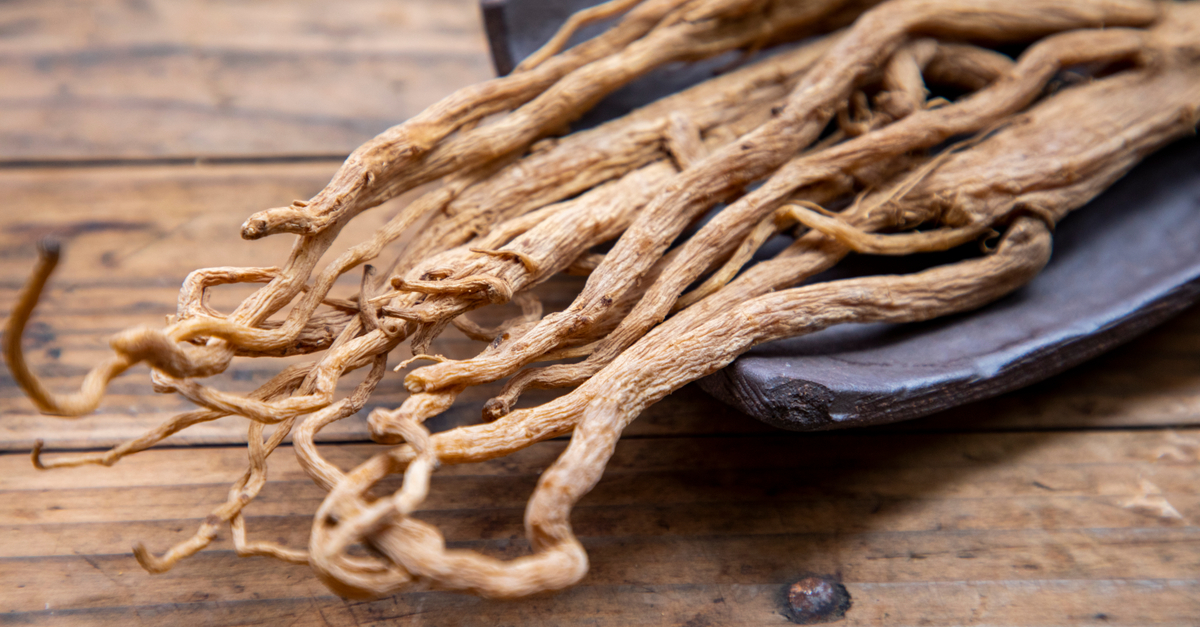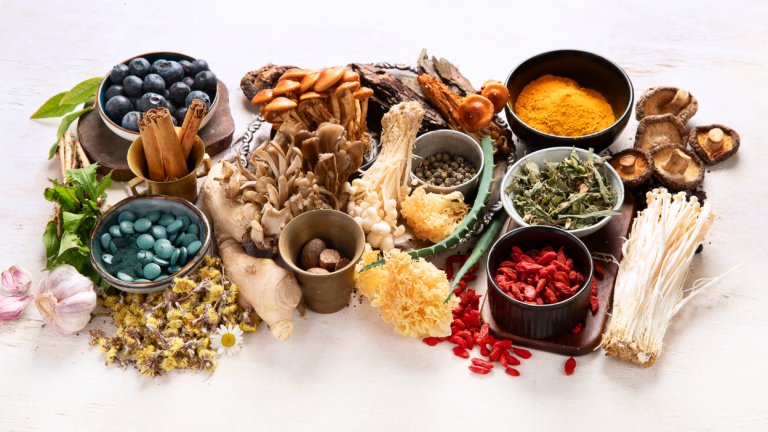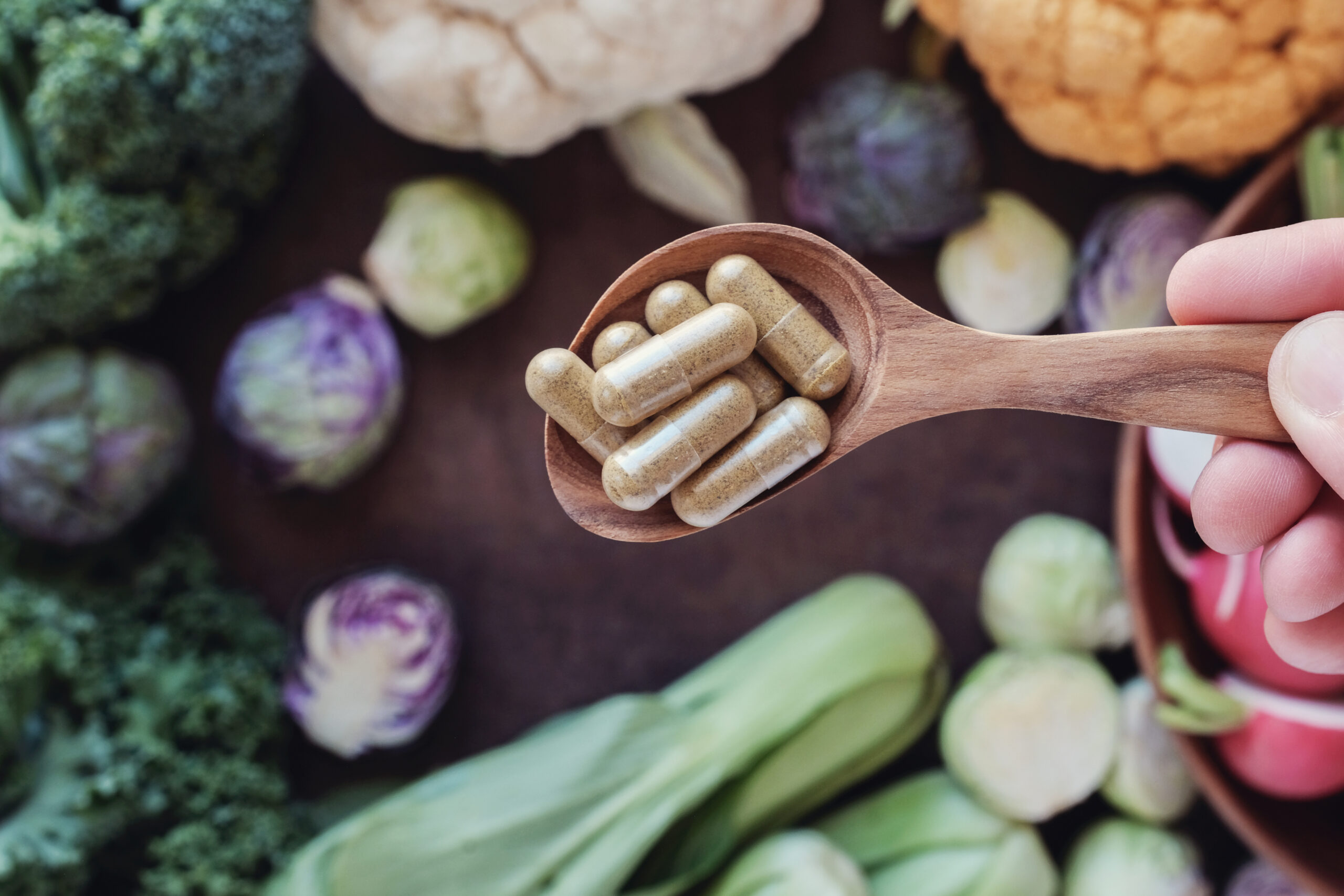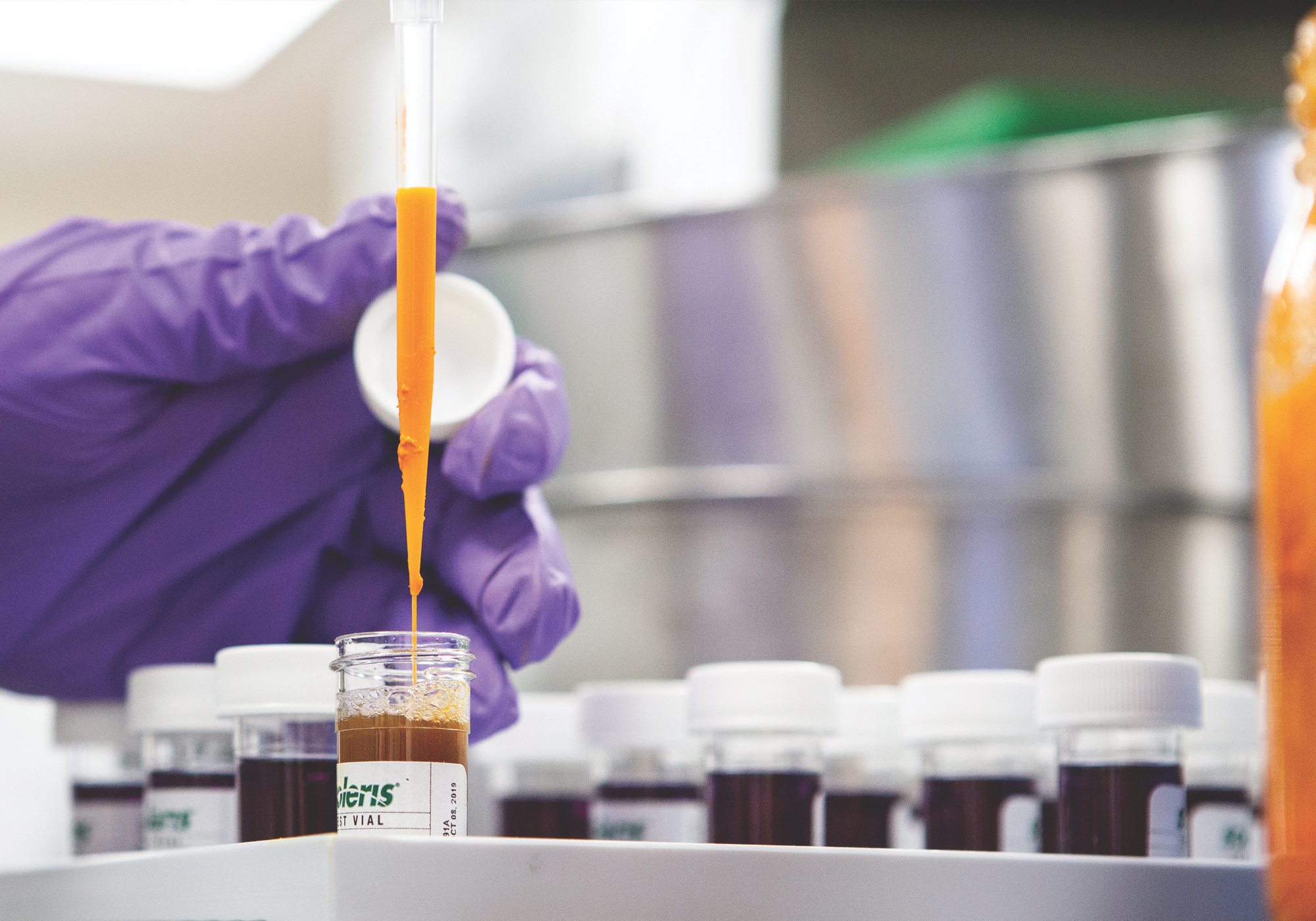Scientific name:Codonopsis pilosula Common name:Dang Shen, Group Root
Constituents:1-5
- Polysaccharides (inulin and oligosaccharides)
- Triterpenes & Sesquiterpenes
- Polyynes (choushenpilosulynes A–C) and Polyacetylene glycosides (e.g. Lobetyolin)
- Phenylpropanoid glycosides (e.g. tangshenosides)
- Alkaloids (e.g. codonopsine, codonopsinine)
- Flavonoids
- Coumarins
- Protein & amino acids
- Lipids
- Lignans
- Vitamins A, B1, B2, B3
- Minerals (calcium, magnesium, iron, and zinc)
Medicinal Actions:
- Adaptogen6
- Tonic
- Immunomodulator
- Nutritive
Traditional Use:
- pilosula has had medicinal and culinary uses in traditional folk medicine in countries such as China, Japan and Korea for thousands of years.
- Is an incredibly important tonic agent in Traditional Chinese Medicine which functions to replenish Qi, strengthening the spleen, tonify the lungs, and nourish blood and fluids. Is commonly combined in formula with other herbs (e.g. Astragalus, Reishi) to support chronic illness and key indications for its use include fatigue, shortness of breath, chronic cough, palpitations, fatigue, loss of appetite, loose stools, and diarrhea.7
- pilosula is frequently used as a substitute for the more costly Panax ginseng as according to TCM principles it exhibits similar therapeutic effects. (Note: that in contrast to P. ginseng root, C. pilosula root does not contain ginsenosides).8
Evidence Based Use:
- Immunomodulating properties have been observed in cancer patients receiving chemotherapy and/or radiotherapy when used in a combination herbal product.9 Additionaly, research in animals has displayed pilosula to have strengthening effects upon the immune system, heightening the phagocytic activity of macrophages and potentially triggering a shift of TH2 to TH1.10
- Shown to have anti-hypertensive effects in hypertensive animal models and effectively prevent endothelial dysfunction, inflammation, and lipid peroxidation in pre-hypertensive humans.11
- Shown to have neuroprotective effects in animal models, and in combination with Gingko biloba in humans to improve cognitive function and enhance memory acquisition and retention in a double blind randomized placebo controlled trial.12
- May help improve lung function, exercise capacity, quality of life, and exacerbations in cases of stable chronic obstructive pulmonary disease (COPD) in humans.13
- Studies in animals have shown significant anti-stress and anti-fatigue activities such as prolonging life span under conditions of limited oxygen supply by increasing energy resources, reducing the incidence of drug or stress-induced stomach ulcers by increasing the protection of gastric mucosa cells, decreasing detrimental metabolite accumulation, preventing lipid peroxidation, enhancing immunity, improving memory, lowering blood pressure, and enhancing antioxidant activity.14-17
Mechanism of Action + Pharmacology:
- Polysaccharides appear to be a major pharmacologically active constituent and have exhibited various biological activities, including immunomodulation, anti-tumor, prebiotic, neuroprotective, anti-fatigue, anti-viral, anti-inflammatory, hypoglycemic, anti-hypoxia, renoprotective, gastroprotective, hepatoprotective, and antioxidation activity in vitro and in vivo.18,19
- Polyacetylenes (e.g. Lobetyolin) has demonstrated anti-inflammatory and anti-oxidative properties and have shown anti-cancer effects in animal models.20
Safety + Toxicity Concerns:
- No known contraindications or adverse reactions expected at standard doses.21
Interactions:
- None known22
References
- Yang, D. et al. (2019). Comparative analysis of chemical composition, antioxidant and antimicrobial activities of leaves, leaf tea and root from Codonopsis pilosula. Industrial Crops and Products, 142, 111844.
- He, J. et al. (2015). The genus Codonopsis (Campanulaceae): a review of phytochemistry, bioactivity and quality control. Journal of natural medicines, 69(1), 1-21.
- Luan, F. et al. (2021). Extraction, purification, structural characteristics and biological properties of the polysaccharides from Codonopsis pilosula: a review. Carbohydrate Polymers, 261, 117863.
- Ren, J., Lin, Z., & Yuan, Z. (2013). Tangshenosides from Codonopsis lanceolata roots. Phytochemistry Letters, 6(4), 567-569.
- Hu, X. et al. (2018). Three new polyynes from Codonopsis pilosula and their activities on lipid metabolism. Molecules, 23(4), 887.
- Wagner, H., Nörr, H., & Winterhoff, H. (1994). Plant adaptogens. Phytomedicine, 1(1), 63-76.
- Gao, S. et al. (2018). Traditional uses, phytochemistry, pharmacology and toxicology of Codonopsis: A review. Journal of ethnopharmacology, 219, 50-70.
- Wagner, H., Nörr, H., & Winterhoff, H. (1994). Plant adaptogens. Phytomedicine, 1(1), 63-76.
- Zhuang, S. et al. (2009). Effect of citronellol and the Chinese medical herb complex on cellular immunity of cancer patients receiving chemotherapy/radiotherapy. Phytotherapy Research: An International Journal Devoted to Pharmacological and Toxicological Evaluation of Natural Product Derivatives, 23(6), 785-790.
- Gao, S. et al. (2018). Traditional uses, phytochemistry, pharmacology and toxicology of Codonopsis: A review. Journal of ethnopharmacology, 219, 50-70.
- Shin, Y. K. et al. (2020). Beneficial effects of Codonopsis lanceolata extract on systolic blood pressure levels in prehypertensive adults: A double‐blind, randomized controlled trial. Phytotherapy Research, 34(2), 340-348.
- Singh, B. et al. (2004). Dangshen (Codonopsis pilosula) and Bai guo (Gingko biloba) enhance learning and memory. Alternative therapies in health and medicine, 10(4), 52.
- Shergis, J. et al. (2015). Dang shen [Codonopsis Pilosula (Franch.) Nannf] herbal formulae for chronic obstructive pulmonary disease: A systematic review and meta‐analysis. Phytotherapy Research, 29(2), 167-186.
- Xie, Q. et al. (2020). Antifatigue and antihypoxia activities of oligosaccharides and polysaccharides from Codonopsis pilosula in mice. Food & Function, 11(7), 6352-6362.
- Wang, Z. T. et al. (1997). Investigations on the protective action of Condonopsis pilosula (Dangshen) extract on experimentally-induced gastric ulcer in rats. General Pharmacology: The Vascular System, 28(3), 469-473.
- Singh, B. et al. (2004). Dangshen (Codonopsis pilosula) and Bai guo (Gingko biloba) enhance learning and memory. Alternative therapies in health and medicine, 10(4), 52.
- Wang, J. et al. (2021). Herbal Extract from Codonopsis pilosula (Franch.) Nannf. Enhances Cardiogenic Differentiation and Improves the Function of Infarcted Rat Hearts. Life, 11(5), 422.
- Luan, F. et al. (2021). Extraction, purification, structural characteristics and biological properties of the polysaccharides from Codonopsis pilosula: a review. Carbohydrate Polymers, 261, 117863.
- Zou, Y. et al. (2020). Prospects of Codonopsis pilosula polysaccharides: Structural features and bioactivities diversity. Trends in Food Science & Technology, 103, 1-11.
- He, W. et al. (2020). Lobetyolin induces apoptosis of colon cancer cells by inhibiting glutamine metabolism. Journal of Cellular and Molecular Medicine, 24(6), 3359-3369.
- Mills, S. Y., & Bone, K. (2004). The essential guide to herbal safety. Elsevier Health Sciences.
- Gardner, Z., & McGuffin, M. (Eds.). (2013). American Herbal Products Association’s botanical safety handbook. CRC press.







